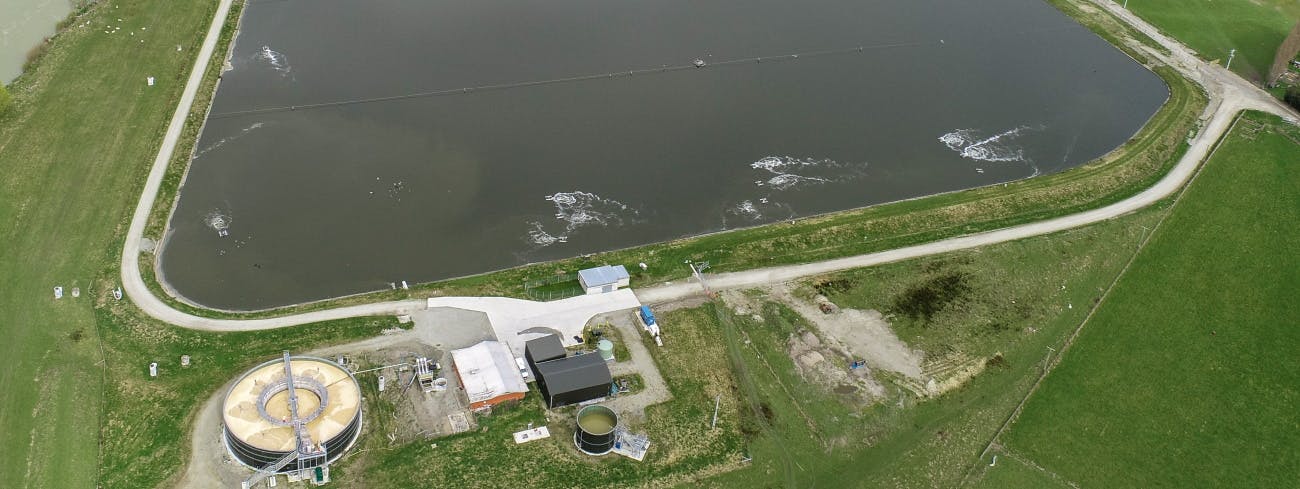Wastewater treatment long term strategy revealed
The Gore District Council plans to significantly improve the quality of wastewater being discharged into the Mataura River over the next 30 years.
The long term strategy for wastewater treatment in Gore and Mataura was revealed this week, as the Council works towards lodging applications to renew its resource consent discharge permits.
3 Waters Asset Manager Matt Bayliss said wastewater treatment was a major issue for councils throughout New Zealand with community expectations and national regulations significantly changing in recent years.
“National freshwater reform requirements mean we need to take a new approach to how we treat wastewater before it’s discharged into the river.”
Over the past two years, Council staff have considered numerous options before settling on the best practicable option that takes into account social, environmental and financial implications for residents, as well as the cultural expectations of local iwi.
“We need to strike a balance between providing for current needs, future proofing our infrastructure for community growth, and minimising our impact on the environment.”
The best option to meet new national freshwater standards was a three stage development, costing potentially up to $61million over 30 years. It will see the construction of a new biological nutrient removal (BNR) treatment plant, which will treat the wastewater to a high quality.
The key advantages of the new BNR plant included a higher level of nitrogen removal, and that it allows for repurposing of the oxidation ponds to provide enhancement of treated wastewater.
Gore District Mayor Tracy Hicks said upgrading wastewater treatment was one of the biggest infrastructure projects for the Council.
“Financially it’s not one we can do without considerable funding assistance. We will definitely be looking to the Government, as well as exploring external and industry funding partnerships.”
Current treatment methods were designed to meet existing resource consent discharge conditions for Gore and Mataura, but the Council knows that in future it will need to do better, Mr Hicks said.
“We are one of the first councils to embark on this journey to meet the demands laid out by central government. We know we need to do better at ensure any discharges to our waterways are of the highest possible standard.
“However, as a small community this isn’t a cost we can bear alone. We are and will continue to knock on the Government’s door to ensure our actions to comply comes with significant financial assistance,” Mr Hicks said.
The Council outlines its plans for the future in a booklet, which is being delivered to households in Gore and Mataura this weekend, and is keen to get people’s feedback.
Mr Bayliss said the Council will have more detailed conversations with residents as part of its 2024 – 2034 10-Year-Plan.
“Our planning to date has been at quite high level and given the 30 year timeframe, costings are likely to change as the project evolves.”
Future plans for Mataura involves expanding the existing wetlands system and other improvements to optimise the existing treatment plant.
“This is our preferred option as the existing Mataura wastewater treatment plant is working well. The cost to Mataura residents of upgrading to a full mechanical treatment plant or disposal to land is extremely high and would provide limited environmental benefit,” Mr Bayliss said.
He encouraged residents to visit the Council’s engagement portal Let’s Talk at www.lets.talk.goredc.govt.nz to find out more information or ask the project team any questions.
There will be a pop-up information session for residents near the Gore wastewater treatment plant on Wednesday 11 November, between 4.00pm and 6.00pm.
Thanks for being involved in this project. Consultation by the GoreDC has concluded, but Environment Southland will have further consultation when it notifies our consent applications.

